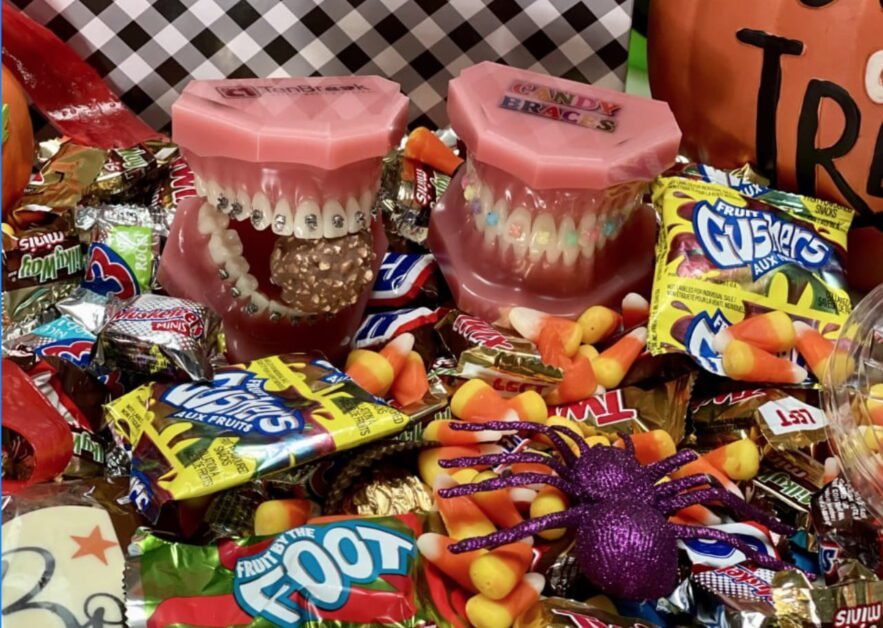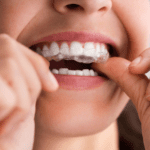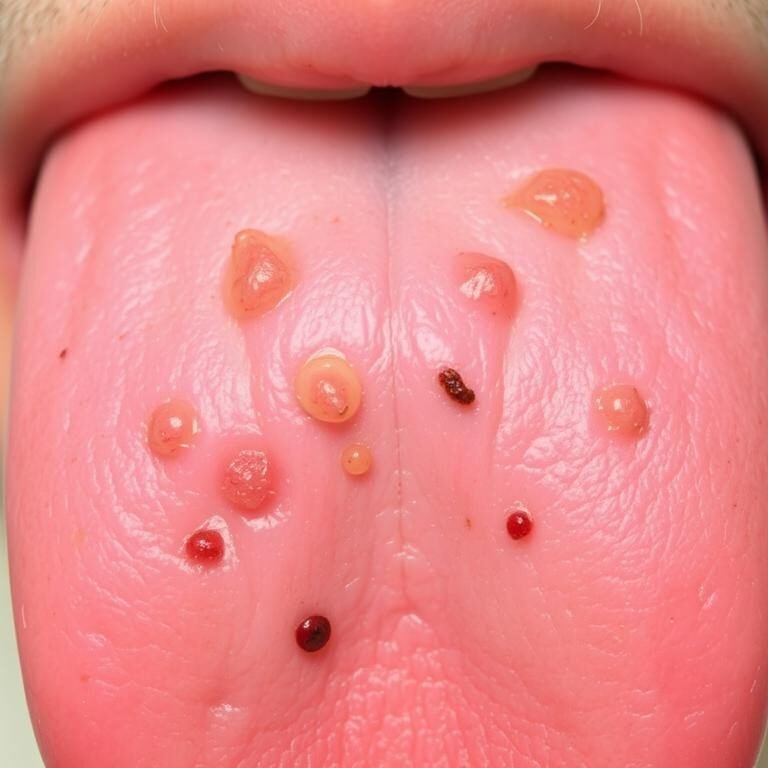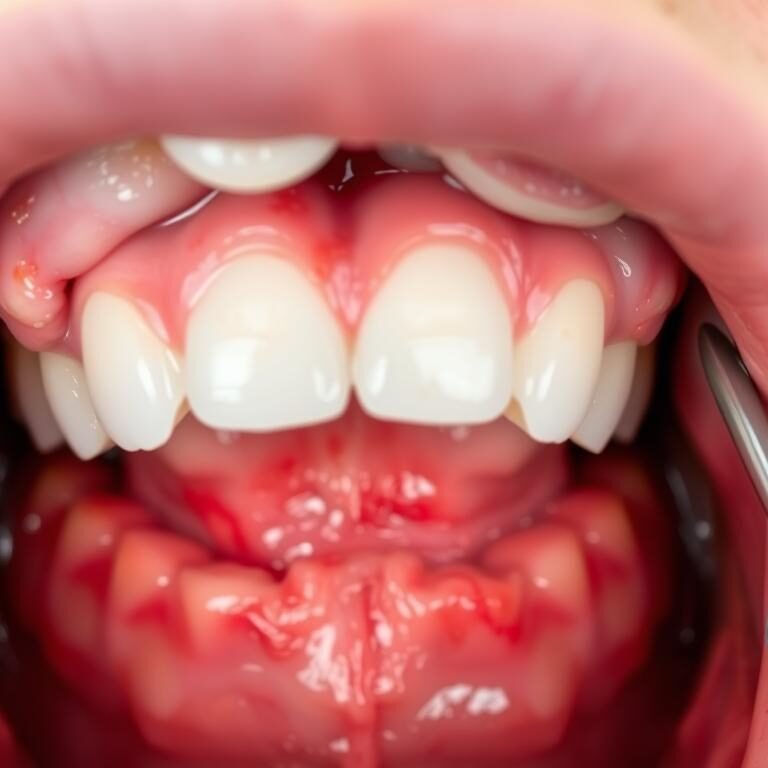Table of Contents
Understanding the impact of candy on braces
When it comes to orthodontic treatment, understanding the impact of candy on braces is crucial for maintaining optimal oral health. While indulging in sweets can be a delight, certain types of candies can pose a risk to the integrity of braces and orthodontic appliances. Sticky candies, such as caramels and gummies, can easily get lodged in between brackets and wires, leading to plaque buildup and increased risk of tooth decay. Additionally, hard candies, like lollipops and jawbreakers, can exert excessive pressure on braces, potentially causing brackets to break or wires to bend.
It’s important to note that the dangers of candy extend beyond just the physical strain on orthodontic devices. Sugary treats can also contribute to the development of cavities and tooth decay. The bacteria in our mouths feed on sugar and produce acid as a byproduct, which erodes tooth enamel and leads to cavities. When braces are in place, it becomes even more challenging to clean teeth effectively, as candy residue can easily get trapped around the brackets and wires. Therefore, understanding the impact of candy on braces is vital for maintaining good oral hygiene and preventing potential complications during orthodontic treatment.
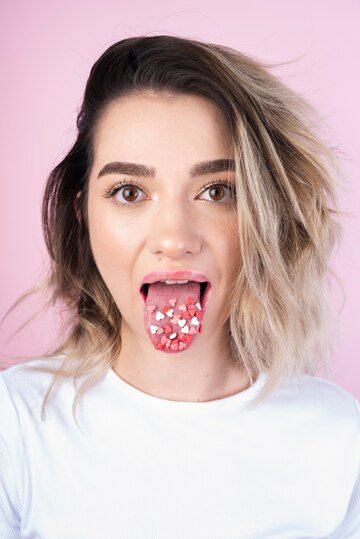
Choosing braces-friendly candy options
When it comes to indulging in sweet treats while wearing braces, it’s important to choose options that are gentle on your orthodontic appliances. Sticky candies, such as caramels and taffy, can become stuck in your braces and damage the wires and brackets. Additionally, hard candies pose a risk of breaking your braces or causing them to shift out of place. Therefore, it’s best to avoid these types of candies altogether.
Instead, opt for braces-friendly candy options that are soft and easy to chew. Chocolate, for example, is a popular choice that is generally safe for those with braces. Just be sure to avoid varieties with nuts or chewy fillings that may pose a risk of getting stuck in your braces. Alternatively, there are sugar-free candies available that are specially made for individuals wearing braces. These options provide a satisfying sweetness without the risk of causing damage. Remember, making thoughtful choices when it comes to candy will help to protect your braces and keep your orthodontic treatment on track.
The importance of proper oral hygiene during Halloween
Good oral hygiene is crucial all year round, but it becomes even more important during Halloween. With all the sugary treats that are prevalent during this holiday, it is essential to take extra care of your teeth and gums. Poor oral hygiene can lead to a multitude of dental problems, such as cavities, gum disease, and even damage to braces for those who are undergoing orthodontic treatment.
One of the main reasons why proper oral hygiene is vital during Halloween is the increased consumption of candy and sweets. Sugar is one of the leading causes of tooth decay, as it feeds the harmful bacteria in our mouths. When we consume sugary treats, these bacteria produce acid, which can erode the enamel of our teeth and lead to cavities. Additionally, braces wearers face additional challenges, as sticky or hard candies can easily get stuck or break the brackets and wires. By maintaining a good oral hygiene routine, including brushing twice a day, flossing daily, and using fluoride mouthwash, you can minimize the harmful effects of sugar and protect your dental health during this festive season.

How to enjoy Halloween treats without damaging your braces
When it comes to enjoying Halloween treats while wearing braces, it’s important to be mindful of the types of candies you choose. Certain candies can easily damage braces or cause them to become dislodged, which can disrupt your orthodontic treatment progress. However, this doesn’t mean you have to miss out on the fun. By opting for braces-friendly candy options and practicing good oral hygiene, you can still indulge in delicious treats without compromising your orthodontic treatment.
One of the key considerations when selecting Halloween treats is to avoid sticky and chewy candies. These types of candies can easily get stuck in between braces brackets and wires, making it difficult to remove them and increasing the risk of damage. Additionally, hard candies should also be avoided, as biting down on them can exert excessive pressure on the braces, potentially leading to breakage or shifting of the wires. Instead, opt for softer candies like chocolate, which are less likely to cause harm to your braces. By choosing wisely, you can satisfy your sweet tooth without putting your orthodontic treatment at risk.
The role of sticky candies in orthodontic damage
Sticky candies may be tempting, but they can prove to be a significant threat to orthodontic treatment. As a dentist with expertise in orthodontics, I have witnessed firsthand the damage that sticky candies can cause. When these candies are consumed, they adhere to the brackets and wires of braces, making it difficult to clean properly. This sticky residue can create a breeding ground for bacteria, leading to plaque buildup and an increased risk of tooth decay.
Moreover, the constant pulling and tugging caused by sticky candies can put undue pressure on the braces, potentially causing them to become loose or break. The adhesive used to attach brackets to teeth may weaken or become compromised, leading to the need for additional appointments and repairs. In severe cases, the damage caused by sticky candies can even result in extended treatment time or the need for more extensive orthodontic interventions. Given these risks, it is crucial for individuals wearing braces to exercise caution and avoid sticky candies altogether.
| Aspect | Description |
|---|---|
| Type of Damage | Sticky candies can cause various types of damage to orthodontic appliances, including braces and retainers. |
| Adhesive Interaction | The sticky nature of candies can adhere to brackets, wires, and other components of braces, causing them to become dislodged or break. |
| Increased Wear and Tear | Consumption of sticky candies increases the wear and tear on orthodontic appliances, potentially leading to the need for more frequent adjustments or replacements. |
| Risk of Decay | Sticky candies tend to cling to teeth and orthodontic devices, increasing the risk of tooth decay and cavities due to prolonged exposure to sugar. |
| Compliance Issues | Patients may find it challenging to clean their teeth and braces properly after consuming sticky candies, leading to compliance issues with oral hygiene routines. |
Why hard candies can be problematic for braces wearers
Hard candies, with their tough and unyielding texture, can pose a significant problem for individuals wearing braces. The firmness of these candies, combined with the pressure exerted from biting down, can put intense strain on the brackets and wires of braces. As a result, the risk of brackets breaking or wires shifting is greatly increased. Not only can this be painful for the wearer, but it can also prolong the duration of orthodontic treatment, as repairs or adjustments may be required.
Additionally, hard candies have a higher propensity to get stuck in the nooks and crannies of braces. This can create a breeding ground for bacteria and increase the risk of tooth decay and gum disease. The longer these sugary substances remain trapped in the hardware, the greater the chance for plaque buildup and the development of cavities. It is essential for braces wearers to understand that proper oral hygiene, including thorough brushing and flossing, is crucial in preventing these potential issues.
Exploring the dangers of chewy candies for braces
Chewy candies may be tempting, but they pose a significant risk for individuals with braces. These sticky treats can easily get stuck in the brackets and wires, making it difficult to clean and increasing the chances of developing cavities and other oral health issues. The continuous exposure to sugary substances can lead to decay and erosion of the tooth enamel, causing lasting damage to the teeth and compromising the effectiveness of orthodontic treatment.
Aside from the potential for dental problems, chewy candies also create a higher risk of damaging the brackets and wires themselves. The sticky consistency of these candies can cause them to become lodged in between the braces components, which can pull or break them apart, leading to discomfort, treatment delays, and additional expenses. In extreme cases, the damage may necessitate emergency care or even replacement of the orthodontic appliances. As tempting as chewy candies may be, it’s crucial for those with braces to avoid them in order to maintain good oral health and a successful orthodontic journey.
Tips for navigating the world of chocolate with braces
Chocolate is a beloved treat that many people enjoy, and even those with braces can indulge in this sweet delight. When it comes to navigating the world of chocolate with braces, it’s important to be mindful of the type of chocolate you choose. Opt for softer varieties such as milk chocolate or white chocolate, as they are less likely to cause damage to your braces. Dark chocolate, while delicious, can be slightly harder and may pose a greater risk of breaking brackets or wires.
In addition to selecting the right type of chocolate, it’s also important to consume it in a manner that minimizes any potential harm to your braces. Avoid biting into chocolate bars or candies with your front teeth, as this can increase the likelihood of damage. Instead, break chocolate into smaller, manageable pieces and enjoy them with your back teeth. This reduces the strain on your braces and helps to protect them from unnecessary wear and tear. By being mindful of your chocolate choices and eating habits, you can still savor the joy of this delectable treat while maintaining the integrity of your braces.

The hidden risks of caramel and toffee for orthodontic patients
Caramel and toffee are undoubtedly delicious treats that many people enjoy. However, for those wearing orthodontic braces, indulging in these sticky and chewy treats can pose hidden risks. The gooey nature of caramel and toffee makes them particularly hazardous for orthodontic patients, as they have a tendency to get stuck in the brackets and wires of braces.
When caramel or toffee becomes trapped in the nooks and crannies of braces, it creates an ideal breeding ground for bacteria. The sugars in these candies feed the bacteria, leading to the production of acids that can erode tooth enamel and cause cavities. Not only that, but the stickiness of caramel and toffee can also pull on the wires and brackets, which can lead to discomfort or even damage to the orthodontic appliances. Therefore, it is important for patients with braces to avoid these tempting treats and opt for braces-friendly alternatives instead.
How to handle popcorn and other crunchy snacks with braces
Popcorn and other crunchy snacks can be a tempting treat, but they can also wreak havoc on your braces if not handled properly. As a braces wearer, it’s important to take extra precautions when indulging in these types of snacks to prevent any damage to your braces or teeth.
One of the main concerns with popcorn is the risk of getting kernel shells stuck in your braces. These tiny pieces can be difficult to remove and may cause irritation or even lead to infection if left untreated. To enjoy popcorn safely, opt for the softer varieties such as puffed popcorn or caramel popcorn without nuts. These options are less likely to have hard pieces that can get lodged in your braces. It’s also a good idea to chew carefully and use your tongue to check for any lingering pieces before swallowing.
The potential effects of sour candies on braces
Sour candies may be a popular choice during Halloween, but they can have potential negative effects on braces. The high acidity of these candies can lead to the erosion of tooth enamel, which is the protective outer layer of the teeth. This can increase the risk of cavities and tooth sensitivity. Additionally, the sticky nature of some sour candies can cause them to adhere to braces, making it difficult to remove the sugar and acid from the teeth. This can further contribute to tooth decay and damage to the braces.
It is important for individuals with braces to exercise caution when consuming sour candies and to be mindful of their oral health. Dentists recommend limiting the intake of these acidic treats and brushing the teeth thoroughly after consumption. Moreover, maintaining a balanced diet and focusing on braces-friendly options can help prevent any potential damage to the braces and maintain good oral health throughout the Halloween season.
| Aspect | Effect |
|---|---|
| Sugar Content | Sour candies often have high sugar content, which can lead to increased plaque buildup around braces, increasing the risk of tooth decay and cavities. |
| Acidic Content | Sour candies contain citric acid and other acids which can erode tooth enamel, leading to white spots, cavities, and weakening of the braces’ adhesive. |
| Discomfort | Sour candies may stick to or get stuck in the braces, causing discomfort and making it difficult to clean properly. |
| Orthodontic Care | Consuming sour candies can necessitate more frequent orthodontic appointments for repairs and adjustments due to damage to the braces caused by chewing hard or sticky candies. |
| Treatment Duration | Prolonged exposure to sour candies can prolong the duration of orthodontic treatment as damage to teeth and braces may require additional time to address. |
The danger of biting into whole fruit with braces
Biting into whole fruit can be a delightful and refreshing experience. However, for those wearing braces, it can pose a significant danger to their oral health. The hardness and fibrous nature of certain fruits can lead to various issues, including damage to the braces and the teeth themselves.
The main concern when biting into whole fruit with braces is the risk of brackets or wires becoming dislodged or broken. Apples, pears, and other crunchy fruits require a significant amount of force to bite into, which can put unwanted pressure on the braces. This pressure can lead to brackets popping off or wires bending, potentially prolonging the treatment process.
Additionally, the natural fibers found in fruits like pineapples or citrus fruits can get trapped between the brackets and wires, making it difficult to clean thoroughly. This can result in the accumulation of plaque, leading to tooth decay and gum disease. It is crucial for individuals with braces to prioritize good oral hygiene practices, such as brushing and flossing, to minimize the risk of these issues.
To enjoy the goodness of whole fruits without compromising their braces, individuals can opt for alternative methods of consumption. Slicing fruits into bite-sized pieces or using a blender to create smoothies can provide a safer and braces-friendly way to enjoy the nutritional benefits of fruits. Remember, it’s better to take a cautious approach and protect your braces rather than risking unnecessary damage and setbacks in your orthodontic treatment journey.
The impact of chewing gum on orthodontic treatment
Chewing gum is a temptation that many orthodontic patients may struggle with, especially during holidays like Halloween. However, it’s important to understand the impact that chewing gum can have on orthodontic treatment. When you have braces, chewing gum can be detrimental to your progress.
The primary concern with chewing gum is its sticky nature. As you chew, the gum can stick to your braces and pull at the brackets and wires. This can lead to discomfort and even cause damage to the orthodontic appliances. Additionally, chewing gum can also stick to your teeth, making it harder to clean and increasing the risk of plaque buildup and tooth decay. As such, it is recommended to avoid chewing gum altogether while wearing braces, to ensure the success of your orthodontic treatment.
How to clean your braces after indulging in Halloween candy
After indulging in Halloween candy, it is important to properly clean your braces to maintain good oral hygiene. Sticky and sugary candies can easily get stuck in the brackets and wires of your braces, increasing the risk of tooth decay and gum disease. To effectively clean your braces, it is recommended to brush your teeth thoroughly and use additional tools like floss threaders and interdental brushes to reach the areas that are difficult to access.
Start by brushing your teeth for at least two minutes using a soft-bristle toothbrush. Make sure to pay extra attention to the areas around your braces, brushing gently in a circular motion. Angling the toothbrush bristles towards the gumline can also help remove any food particles trapped there. Using fluoride toothpaste can provide extra protection against tooth decay. Don’t forget to brush the chewing surfaces and the back of your teeth as well. Rinse your mouth thoroughly after brushing to remove any remaining debris.
Understanding the importance of regular orthodontic check-ups during Halloween
Regular orthodontic check-ups are crucial, especially during the Halloween season. While the festivities may bring joy and excitement, it’s essential to remember that braces require diligent care and maintenance. These routine examinations allow orthodontists to monitor the progress of your treatment, identify any issues or complications, and make necessary adjustments. By adhering to regular check-ups, you can ensure that your orthodontic journey stays on track, providing you with the best possible results.
During Halloween, when indulging in sweets becomes the norm, it’s even more important to prioritize your orthodontic check-ups. The excess consumption of candy can increase the risk of tooth decay, particularly for those with braces. Regular appointments with your orthodontist offer an opportunity to thoroughly clean your teeth and brackets, removing any harmful plaque or debris that may have accumulated. Additionally, your orthodontist may provide valuable guidance on braces-friendly candy options, helping you navigate the holiday season with confidence and maintain optimal oral health.
Tips for maintaining a healthy diet and braces care during Halloween
Maintaining a healthy diet and proper braces care during Halloween is crucial for orthodontic patients. As tempting as it may be to indulge in sugary treats, it’s important to make wise choices to avoid damaging your braces and compromising your dental health.
First and foremost, opt for braces-friendly candy options. Soft treats that easily melt in your mouth, like chocolate or marshmallows, are generally safe choices. However, be mindful of the ingredients in the chocolate, as certain fillings or nuts may pose a risk to your braces. Additionally, fruit-based sweets, such as fruit gummies or jellies, can be enjoyed in moderation, as they tend to be less sticky and hard on braces. To ensure you are making the best choices, consult with your orthodontist for a list of recommended candies.
In addition to candy selection, maintaining proper oral hygiene practices is vital during Halloween festivities. Make sure to brush your teeth thoroughly after enjoying treats to remove any food debris that can get trapped in your braces. Using an interdental brush or floss threader can help reach the areas between brackets and wires. It’s also beneficial to rinse your mouth with water or an antimicrobial mouthwash to further eliminate any lingering sugars or acids. By staying mindful of your diet and consistently practicing good oral hygiene, you can enjoy Halloween without compromising your braces treatment.
Can I eat any type of candy with braces?
No, it is important to choose braces-friendly candy options that won’t damage your braces. Sticky and hard candies should be avoided.
What are some braces-friendly candy options?
Some braces-friendly candy options include soft chocolates, peanut butter cups, and melt-in-your-mouth candies like chocolate-covered raisins or peppermint patties.
How can I enjoy Halloween treats without damaging my braces?
You can enjoy Halloween treats by opting for softer candies or cutting them into smaller pieces to make them easier to eat. It is also important to brush and floss after indulging in sweets.
Why are sticky candies problematic for braces wearers?
Sticky candies can easily get stuck in your braces and increase the risk of tooth decay. They can also pull on the brackets and wires, potentially causing damage to your orthodontic treatment.
Are hard candies safe for people with braces?
No, hard candies can put excess pressure on your braces, causing them to break or come loose. They can also lead to tooth fractures or damage to the enamel.
What are the dangers of chewy candies for braces?
Chewy candies can stick to your braces and teeth, increasing the risk of cavities. They can also pull on the wires and brackets, potentially leading to orthodontic issues.
How can I navigate the world of chocolate with braces?
Opt for soft chocolates without nuts or caramel fillings. Avoid hard chocolates that can potentially damage your braces.
Are caramel and toffee safe for orthodontic patients?
No, caramel and toffee are sticky and can easily get stuck in your braces, leading to dental issues and potential damage to your braces.
Can I eat popcorn and other crunchy snacks with braces?
It is best to avoid popcorn and other crunchy snacks as they can get lodged in your braces and cause damage. It is better to opt for softer alternatives.
What are the potential effects of sour candies on braces?
Sour candies are highly acidic and can weaken the enamel, making your teeth more susceptible to cavities. They can also stick to your braces and cause damage.
Is it safe to bite into whole fruit with braces?
Biting into whole fruit, especially hard fruits like apples, can potentially damage your braces. It is recommended to cut fruit into smaller pieces before consuming.
Can I chew gum with braces?
It is best to avoid chewing gum with braces as it can stick to your brackets and wires, causing them to become loose or detached.

